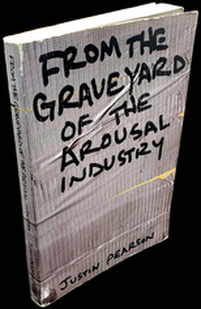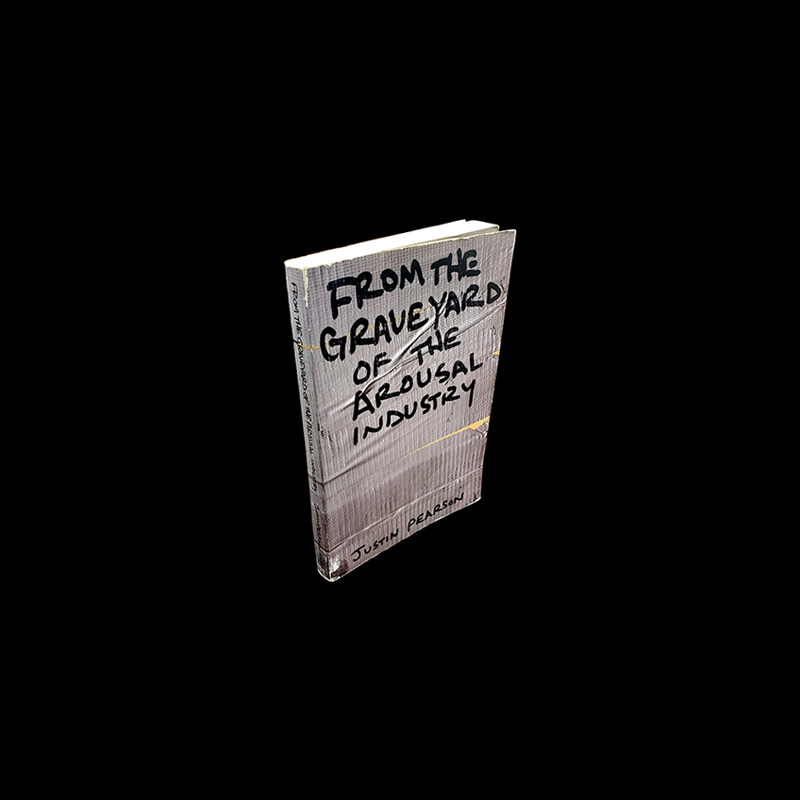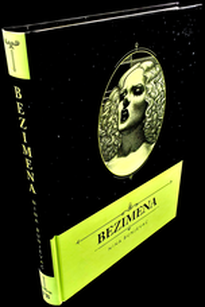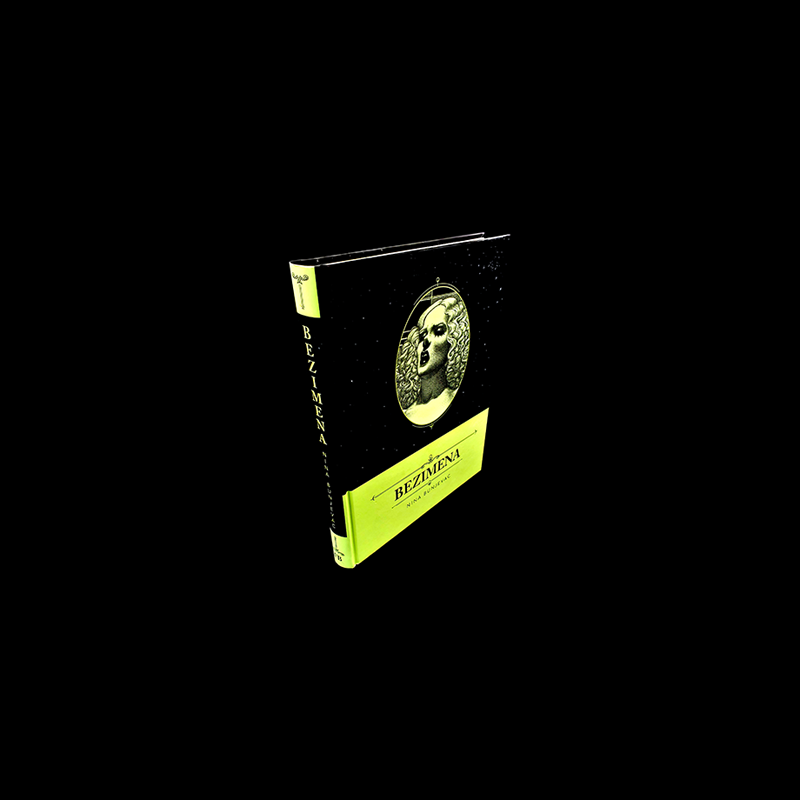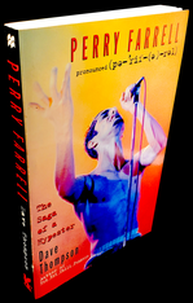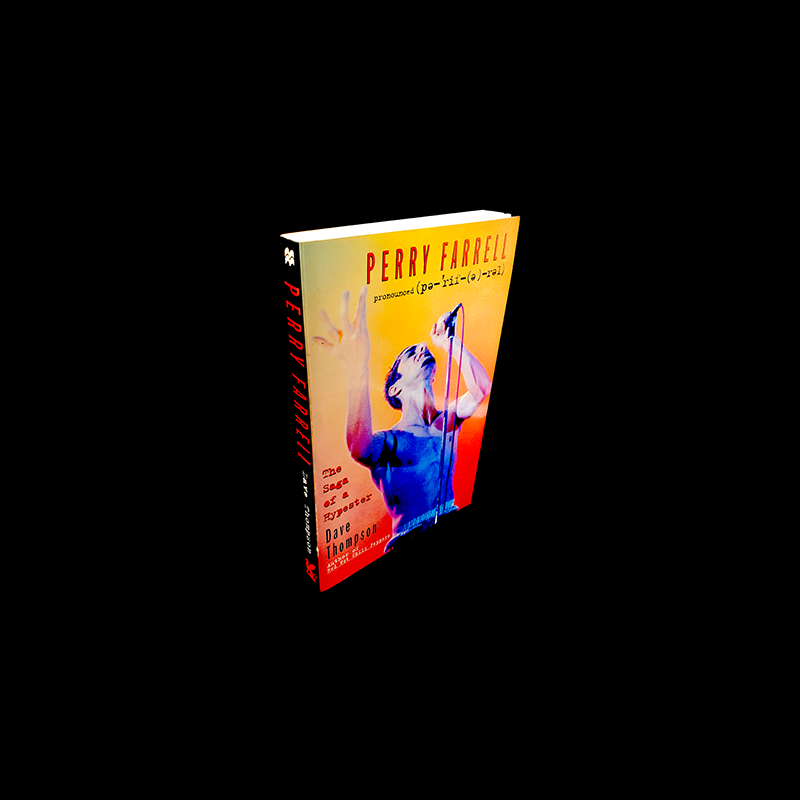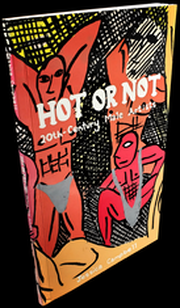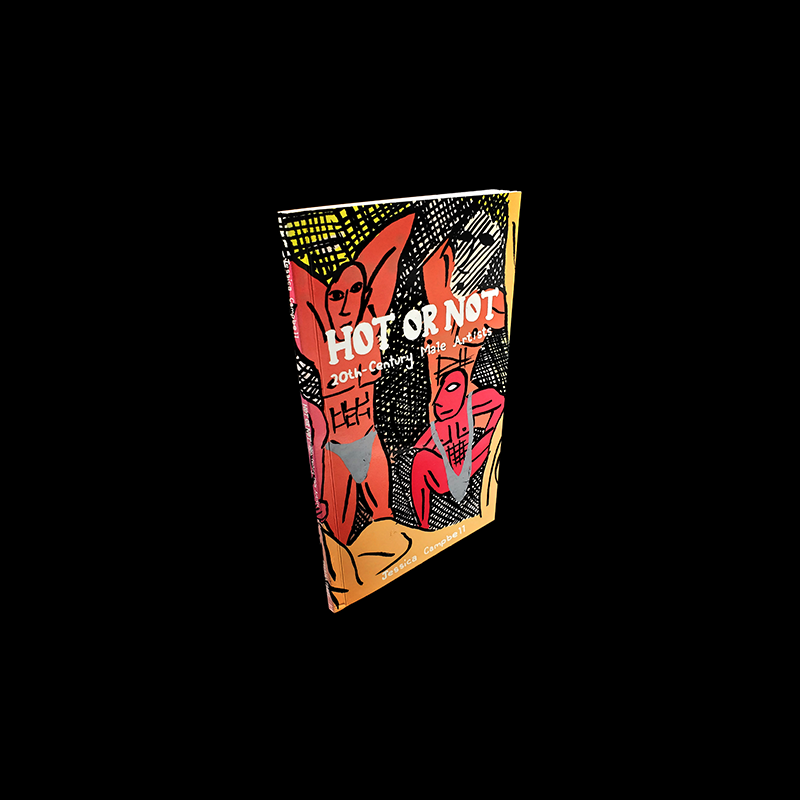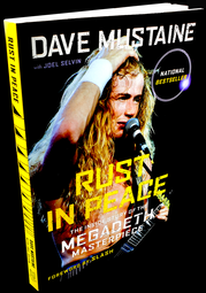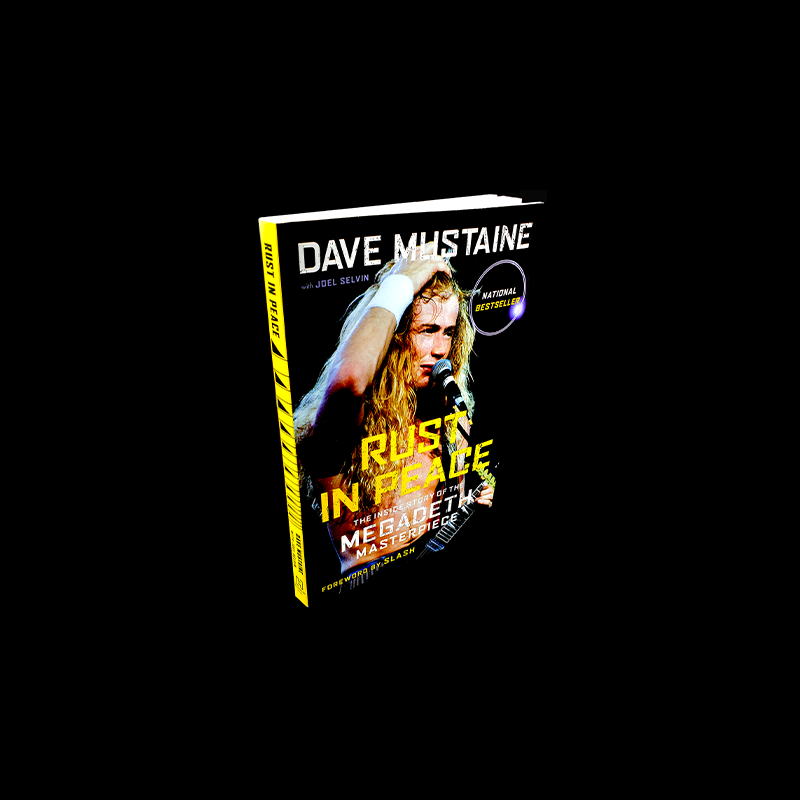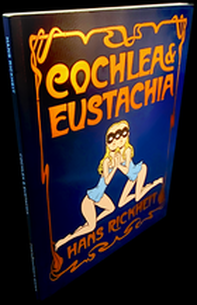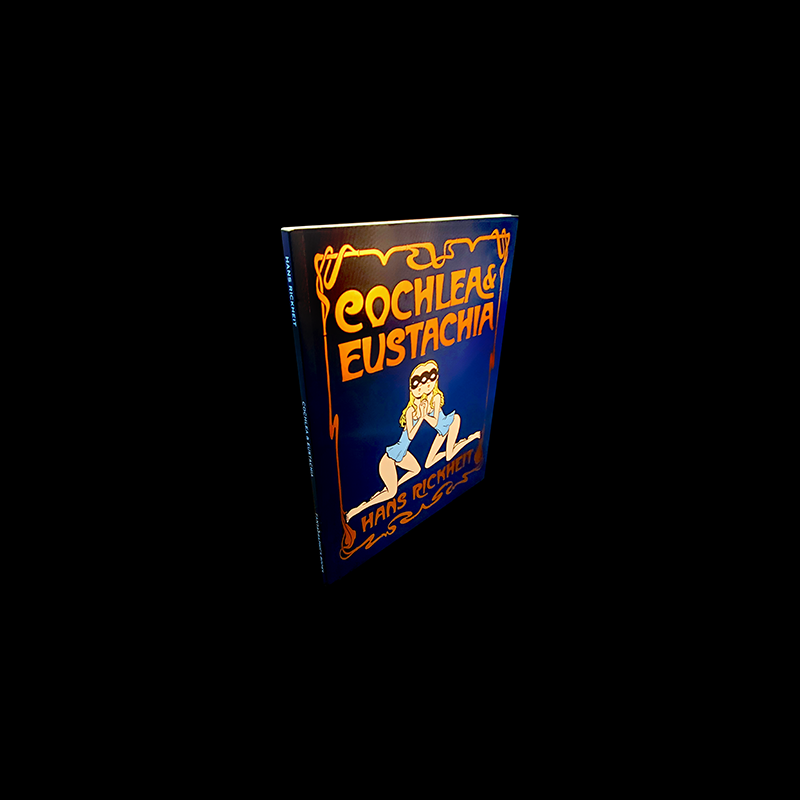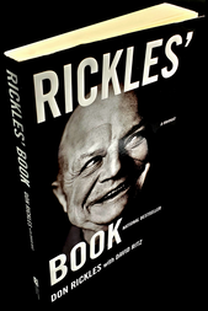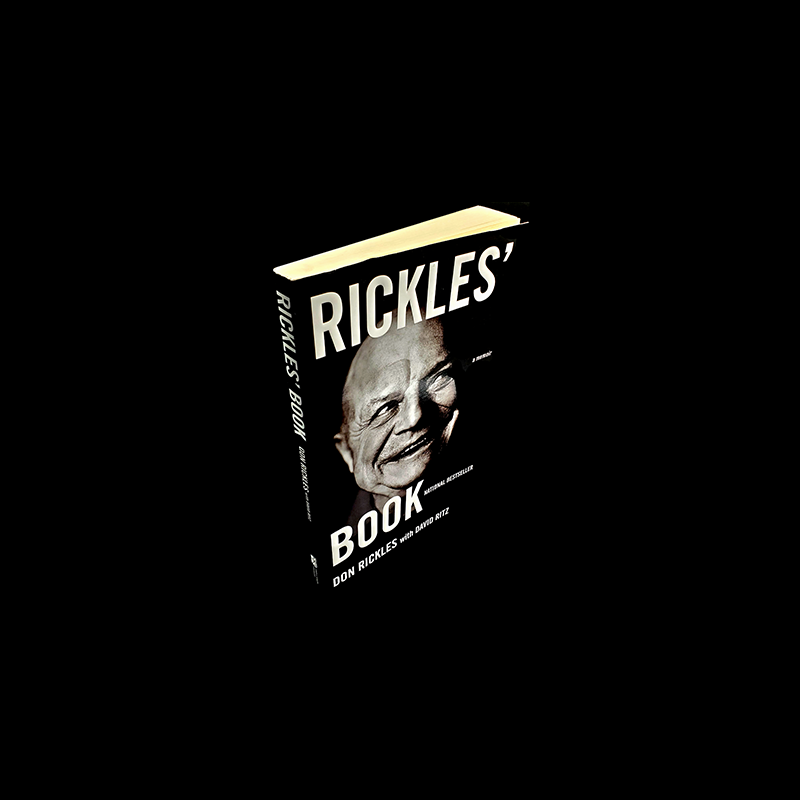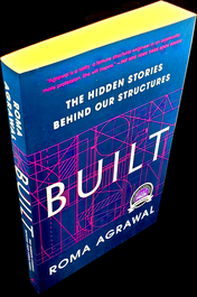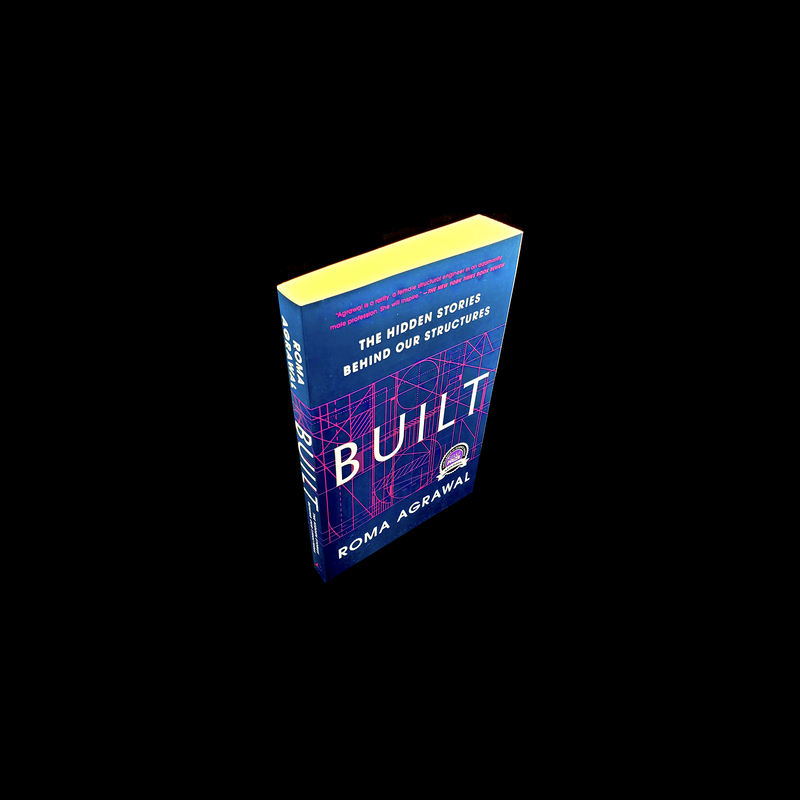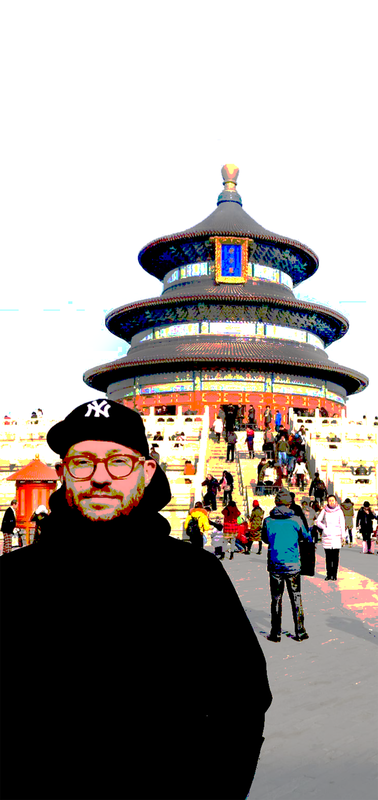|
photo & text by nacrowe
BEAUTIFUL DARKNESS (DRAWN & QUARTERLY, 2009) is a FRENCH GRAPHIC NOVEL that is absolutely TWISTED in a decidedly ABSURDIST manner that i did not anticipate entering into this FANTASY narrative. written by MARIE POMMEPUY & FABIEN VEHLMANN and lovingly illustrated by KERASCOËT, the namesake of COLLABORATIVE HUSBAND-AND-WIFE team POMMEPUY and SEBASTIAN COSSET, BEAUTIFUL DARKNESS is very much a CASE STUDY in STARK contrasts with seemingly ENCHANTING ILLUSTRATIONS of DIMINUTIVE DWELLERS in a LUSH forest acting out a BRUTAL NARRATIVE that is as NIHILISTIC as it is CHAOTIC and ANARCHISTIC. it should be stated the particular STYLE of these ALLURING ILLUSTRATIONS seem ripped straight from that INNOCENT MODE of CLASSIC children's LITERATURE read and presented and preschools and kindergartens the world over.
the only difference is that these PIXIES and SPRITES inhabit a world of RANDOM DEATH and WANTON CRUELTY that they seem OBLIVIOUS and UNPREPARED for in terms of IMAGINATION and basic COMPREHENSION. seeking food and shelter the take advantage of the ROTTING CORPSE of a YOUNG CHILD inexplicably lying PROSTRATE on the ground from some UNREVEALED ailment or condition that led to her untimely passing. these woodland figures seek refuge in her eye socket and opportunisticly steal from her lunch pack as they go about their day. death follows everyone, where some are eaten by TOADS or a COLONY OF ANTS or even harassed by BIRDS and passing INSECTS. NATURE in this context is an equal opportunity destroyer. that being said, the plot feels very LORD OF THE FLIES (FABER AND FABER, 1954) with these NAIVE INHABITANTS being subject to the RUTHLESS DARWINIAN CODE OF NATURE in a HOSTILE ENVIRONMENT, both INTERNALLY as a social community and EXTERNALLY against the UNFORGIVING elements. my sense is that BEAUTIFUL DARKNESS is attempting to present a WORLDVIEW that is weary of APPEARANCES, which are UNREPRESENTATIVE and consciously deceiving us of the TRUE NATURE OF REALITY. such could also be said about much of what we take for granted about our own EXISTENCE and LIMITED sense of SELF-IDENTITY, which may be rooted in bedrock that is looser and less defined then we'd hoped or imagined. especially now given that BASIC concepts of EQUALITY, FAIR PLAY and even DEMOCRACY seem up for grabs in a world run by those with a REGRESSIVE and REDUCTIVE ZERO-SUM MENTALITY. better to be on guard and CONSCIOUS of said THREATS. not get lulled into APPEARANCES as is the case with BEAUTIFUL DARKNESS, whose WHIMSICAL ILLUSTRATIONS belie the true intent of the NARRATIVE and its DARK take on EXPERIENCED REALITY.
0 Comments
photo & text by nacrowe
i was a sophomore at a boarding school in NEW ENGLAND when i basically devoured and too to heart the stridently POLITICAL LOS ANGELES ALTERNATIVE METAL BAND SYSTEM OF A DOWN's lyrically and sonically INCENDIARY eponymous debut album SYSTEM OF A DOWN (AMERICAN, 1998), so much so that as part of a WORLD HISTORY class assignment tasked with us researching an UNDERREPORTED CULTURAL EVENT, i wrote about the ARMENIAN GENOCIDE. looking back it was a POWERFUL EXPERIENCE writing that essay, because some TURKISH EXCHANGE STUDENTS caught wind of my topic and repeatedly, albeit somewhat respectfully, argued forcefully and passionately that such was the stuff of FANTASY, inherently NONFACTUAL and at worst a RACIST lie against TURKS perpetuated by THE WEST. so of course i included that whole series of exchanges in the paper itself to state how such was still very much a real, living concern and point of EXTREME GEOPOLITICAL CONTROVERSY some 80+ years after its occurrence.
and its occurrence, despite AMERICAN FOREIGN POLICY to the contrary up through BIDEN ending such in 2021, was and still is an historical fact. i mention this because SERJ TANKIAN, the ARMENIAN-AMERICAN SONGWRITER / COMPOSER / ACTIVIST and CELEBRATED VOCALIST of SYSTEM OF A DOWN, in his RECENT memoir DOWN WITH THE SYSTEM (HACHETTE, 2024), makes clear the depths of how his MUSIC and POLITICAL ACTIVISM are not separate entities, but INTERTWINED EXPRESSIONS for combatting that are rooted in a self-image that is defined by the GENERATIONAL TRAUMA incurred by his family and the goal of UNIVERSAL RECOGNITION of said PAIN and ANGUISH. i am almost certain that for most readers of this book, i.e. OBSESSED METALHEADS, there will no doubt be much DISAPPOINTMENT at the amount of ARMENIAN HISTORY imparted at the expense of TRADITIONAL ROCK N ROLL fair about the INTERNAL DYNAMICS of the BAND, their origins and HIDDEN meanings behind FAMOUS tracks. that is all there but its not the FOCUS in the least. in fact, his role as an ARTIST is largely an outgrowth of his ACTIVISM, which he has been involved with since his teens in LOS ANGELES as an IMMIGRANT from BEIRUT, where he was born and lived til age seven. i feel like for the longest time, especially in the many years since SYSTEM OF A DOWN became a DORMANT entity in favor of ever more UNCOMMERCIAL and AVANT-GARDE releases by TANKIAN, there has been a dearth of information regarding the indefinite hiatus to the fanbase. there are plenty of examples of prominent CONTEMPORARY ARTISTS starting side projects that scratch an ARTISTIC itch, but such is usually communicated as such to the public. such MUSICIANS include MAYNARD JAMES KEENAN (TOOL, A PERFECT CIRCLE, PUSCIFER), PHIL ANSELMO (PANTERA, DOWN, SUPERJOINT RITUAL), DAVE GROHL (FOO FIGHTERS, THEM CROOKED VULTURES), CHINO MORENO (DEFTONES, CROSSES, PALMS), TOM MORELLO (RAGE AGAINST THE MACHINE, AUDIOSLAVE, THE NIGHTWATCHMAN, STREET SWEEPER SOCIAL CLUB), MAX CAVALERA (SOULFLY, KILLER BE KILLED, CAVALERA CONSIRACY), DAMON ALBARN (BLUR, GORILLAZ), SLASH (GUNS N ROSES, THE CONSPIRATORS), THOM YORKE (RADIOHEAD, ATOMS FOR PEACE), JACK WHITE (THE WHITE STRIPES, THE RACONTEURS, THE DEAD WEATHER) and COREY TAYLOR (SLIPKNOT, STONE SOUR). in those cases the main thing remained the main thing. with SYSTEM OF A DOWN there was much interest, but no information, just a bunch of random SELF-INVOLVED EXPERIMENTAL albums by TANKIAN and the SCARS ON BROADWAY vehicle for GUITARIST and SONGWRITER DARON MALAKIAN. what is learned through this memoir is how truly COMPLICATED the INTERNAL DYNAMICS of SYSTEM OF A DOWN truly were, even at the peak of their creative powers in the first half of the 2000s. most of this was between TANKIAN and MALAKIAN, who each vied for CREATIVE CONTROL of the BAND. MALAKIAN (and the rest of the band) effectively wanted an UNAMBIGUOUS DELINEATION OF LABOR whereby he wrote the MUSIC and TANKIAN wrote the LYRICS, with some MINIMAL overlap. over time TANKIAN wanted more CONTROL over the MUSIC, ground MALAKIAN was UNWILLING to cede. publishing splits also entered the picture but really ARTISTIC CONTROL is what caused TANKIAN to step away from the BAND blaze his own INDEPENDENT path. in one of the most POTENT admissions in the book TANKIAN accepts that the STRIDENT manner in which he put himself out there politically belied a more INTIMATE INABILITY to effectively confront his own friends in the BAND regarding PROBLEMS he (alone) saw in their CREATIVE PROCESS and DECISION-MAKING PATTERNS. his subsequent solo career and MYRIAD of outside collaborations thus worked as a means of reclaiming that PROCESS. that CONTROL. and thus almost twenty years after the release of MEZMERIZE (AMERICAN, 2005) and HYPNOTIZE (AMERICAN, 2005) there has not been a new SYSTEM OF A DOWN album. this memoir in part is his explanation of such, as well as introduction to his POLITICS and ACTIVISM for the uninitiated, to a still RABID fanbase waiting for NEW MUSIC. i get the feeling that the wait will continue UNABATED since TANKIAN is likely to hold the BAND and his audience HOSTAGE indefinitely, EXPLANATIONS notwithstanding. its not that i dont understand his RATIONALE, its just that BANDS are inherently not DEMOCRACIES, so its CONFUSING and a bit ANNOYING how NAIVE he comes across aspire for SYSTEM OF A DOWN to be one. BANDS are more than not usually dominated by KEY MEMBERS vying for POWER and RECOGNITION (and often publishing). see NOTORIOUS examples like OASIS, VAN HALEN, METALLICA, THE SMITHS, FLEETWOOD MAC, GUNS N' ROSES, THE POLICE, BLINK-182, NEW ORDER, PANTERA, THE KINKS, SONIC YOUTH, CREEDENCE CLEARWATER REVIVAL, THE EAGLES, SMASHING PUMPKINS and even THE BEATLES. not everyone can be SENSIBLE and COMPASSIONATE like U2, RADIOHEAD, COLDPLAY, REM and RUSH who share royalties evenly. the norm is the quite the OPPOSITE. they are the exception. SYSTEM OF A DOWN is a SINGULAR BAND with a UNIQUE aesthetic and their fans have long suffered through DYSFUNCTION, INACTIVITY and a dearth of NEW MATERIAL. they lose in the end as they are stuck with these SELF-INDULGENT TANKIAN side trips that arent particularly COMPELLING. just get the BAND back together already. photo & text by nacrowe
the ROCK N ROLL CULTURAL PHENOMENON that was GUNS N' ROSES is on full display and CELEBRATED in STUNNING detail in the RECKLESS LIFE: GUNS N' ROSES (OMNIBUS, 2015) graphic novel by BRITISH AUTHOR JIM MCCARTHY and ARTIST MARC OLIVENT. through its STARK black-and-white IMAGERY and direct PROSE, this team was able to provide and CONTEXT and DEPTH to the NARRATIVE of this NOTORIOUS LOS ANGELES band with all of its REQUISITE DANGER, VOLATILITY, DEBAUCHERY, PARANOIA and GUTS.
in particular, their treatment of the pre-FAME lives of each MEMBER just proves what a collection of MISFITS the band actually were. in particular the ERUPTIVE UNPREDICTABILITY that is VOCALIST AXL ROSE, with all of his PUNCTUALITY issues and UNSTABLE TEMPERAMENT, makes total sense when you consider his RURAL midwestern INDIANA UPBRINGING and the CLOSETED MINDSET he was attempting to break out of that was related to the OVERBEARING RELIGIOSITY of his community and the HYPOCRISY of the adults in his life who provided him no EMOTIONAL SECURITY. the graphic novel does not excuse his later behavior, of which was quite MISOGYNISTIC and even RACIST at times, but rather places it in context. likewise you have the figure of MULTI-INSTRUMENTALIST DUFF MCKAGAN and his fervent love of UNDERGROUND PUNK ROCK and involvement in the NASCENT pre-ALTERNATIVE scene in SEATTLE being overshadowed by the rise of heroin that affected multiple FORMER BANDMATES. for him LOS ANGELES represented a clean start and a NEW IDENTITY as a BASSIST ready to chase his ambitions in the belly of the beast. in SLASH, being BIRACIAL and the only son of BOHEMIAN artists involved in the MUSIC INDUSTRY, was garnered a certain OUTSIDER status from the jump and viewed ROCK N ROLL and his NEW IDENTITY as a GUITARIST as a means of expressing his ANGER and FRUSTRATION at his parents' seemingly ABRUPT DIVORCE as a teenager. for all of the key MEMBERS of GUNS N' ROSES, as presented by MCCARTHY and OLIVENT, you get the sense of the TRUE VALUE of the collective and what it meant for their own TROUBLED PSYCHES and COMPLICATED SELF-IDENTITIES, and why such ballooned and/or deconstructed once FAME, FORTUNE and all the ATTENDANT BENEFITS (LIMITLESS SEX and DRUGS) of their labour came to fruition. you get the REAL SENSE that for ROSE in particular, having never been given LOVE, AFFECTION or MEANINGFUL ATTENTION as a child, there was no amount of MONEY, FAME or public outcry of DISGUST or display of LOVE that would fill that INITIAL VOID. such also plays into the MANIC PARANOIA of the late USE YOUR ILLUISION-era when he bought the rights to the band name and attempted to re-employ the ORIGINAL BAND MEMBERS as effective HIRED GUNS. for him LOVE was about CONTROL. and CONTROL of the SUFFOCATING and CONSTRICTING variety. it isolated him and was the reason the CULTURE, as well as myself, largely revolted and went over to support the commercially and artistically SUCCESSFUL SCOTT WEILAND-fronted rival VELVET REVOLVER camp in the early 2000s. most of this INFORMATION is known to dedicated GUNS N' ROSES fans, but the PACKAGING and PRESENTATION of the RECKLESS LIFE: GUNS N' ROSES graphic novel was a delight to engage with and reconsider the INTERWOVEN NARRATIVES of the band once again. it provides INSIGHT into the PSYCHOLOGICAL and SOCIO-ECONONOMIC BACKGROUNDS of all the main MEMBERS and makes you consider ALTERNATE outcomes and possibilities that never came to pass because of such. it is all terribly INTRIGUING and well worth checking out for anyone interested in MODERN ROCK N ROLL history. photo & text by nacrowe
it is FASCINATING to consider BUSINESSES and INDUSTRIES whose INNOVATIONS have transformed and put a LONG-LASTING stamp on CULTURE as we know it and take completely for granted. i immediately think of MASSIVE, ICONIC INDUSTRIES related to TRAVEL (trains, planes and automobiles), CONSUMER GOODS (television, electric kitchen appliances, etc.), CINEMA and INFRASTRUCTURE (highways, bridges, tunnels) that largely defined MODERNITY in a post-WORLD WAR II AMERICA and its then-BOOMING economy.
what WRITER IAN S. PORT (VILLAGE VOICE, ROLLING STONE) in his FANTASTIC THE BIRTH OF LOUD: LEO FENDER, LES PAUL, AND THE GUITAR PIONEERING RIVALRY THAT SHAPED ROCK 'N' ROLL (SCRIBNER, 2019) book is make a COMPELLING argument for the inclusion of the SOLIDBODY ELECTRIC GUITAR, CONCEIVED, MANUFACTURED and MARKETED in the 1940s along such DEFINING INNOVATIONS. chief among said reasoning is that the advent of such, epitomized by the rivalry of MANUFACTURERS FENDER and GIBSON, whose PRODUCT INNOVATIONS regarding such still underpin MUSIC CULTURE more than 75 years later. but what i find truly CAPTIVATING is not how these INSTRUMENTS and PRODUCTS influenced CONTEMPORARY music, but rather how their birth was in a totally different pre-ROCK N ROLL CULTURAL ERA and that, as a BUSINESS PROPOSITION, were attempts at addressing the needs and wants of a cadre of MUSICIANS DIFFERENT and FOREIGN to what we may now recognize. FENDER MODELS like the TELECASTER and STRATOCASTER, as well as the GIBSON LES PAUL and SG MODELS, long sustaining icons of MODERN CULTURE through MULTIPLE generations to the PRESENT, are counterintuitively ANACHRONISMS from an absolutely BYGONE era. and i think that last part is lost on people. for all intents and purposes, those first few MASS-PRODUCED SOLIDBODY GUITARS ENGINEERED, MARKETED and MANUFACTURED primarily by FENDER and GIBSON (although GRETSCH, DANELECTRO, GUILD, RICKENBACKER, EPIPHONE, D'ANGELICO, HARMONY and KAY among others as well) have varied differently in terms of specs since their inception, which is beyond REMARKABLE. the INDUSTRY DISRUPTOR was absolutely LEO FENDER and his SMALL operation out of SOUTHERN CALIFORNIA who built MODERATELY-PRICED INSTRUMENTS with a MODULAR DESIGN (neck and body were joined via screws) aimed initially at both HOBBYIST and WORKING PROFESSIONAL SEGMENTS. this was in contrast to GIBSON, who made their REFINED LES PAUL MODEL aimed exclusively at PROFESSIONALS in response to the success of the relatively SPARE and BASIC TELECASTER MODEL, who chose to make SOLID-BODIED INSTRUMENTS that were in the tradition of their HOLLOW-BODIED ACOUSTIC MODELS that had a decidedly OLD-WORLD EUROPEAN ARTISAN and LUTHIER tradition about them. a MODULAR SYSTEM OF PRODUCTION like FENDER's was in essence an insult to their heritage. the two companies couldnt be more different in terms of PRODUCTION PHILOSOPHY or the SEGMENTS they went after. this difference brought their SOLID-BODIED INSTRUMENTS on SEPARATE paths. the TELECASTER, and its follow-up answer to the LES PAUL - the likewise CURVY and more ERGONOMICALLY-DESIGNED STRATOCASTER, with its more MODEST pricing were wildly SUCCESSFUL and available to all levels of PLAYERS while the ICONIC LES PAUL SINGLE CUTAWAY MODEL died out in 1960 after an eight-year run due to DWINDLING sales. it was just too EXPENSIVE for the market at that point. it was only after the BRITISH INVASION (which interestingly via THE BEATLES was an initial boom for ORANGE COUNTY CROSSTOWN RIVAL RICKENBACKER) garnered AMERICAN POPULAR INTEREST in RHTHYM & BLUES (i.e. ROCK N ROLL). subsequently FORMER YARDBIRDS GUITARIST ERIC CLAPTON resurrecting the LES PAUL MODEL in the eyes of the AMERICAN CONSUMER with the sounds he generated on the debut BLUES BREAKERS WITH ERIC CLAPTON (DECCA, 1966) album by JOHN MAYALL & THE BLUES BREAKERS. for UPCOMING BRITISH GUITARISTS like ROBERT FRIPP, JIMMY PAGE and the like the LES PAUL instantaneously became de rigeur for SUSTAIN, TOUCH-SENSITIVITY and just SHEER TONE. the FENDER MODELS in their eyes were considered toys until a then-UNKNOWN JIMMY HENDRIX blew away CREAM while sitting in with them at an early 1966 gig and made everyone reconsider such. in essence several SEMINAL AMERICAN and BRITISH BLUES-based ROCK N ROLL MUSICIANS created in the PUBLIC CONSCIOUSNESS both brands as valid options for EXPRESSIVE sonic artistry at LOUD volumes. gone were the days of the ACOUSTIC GUITAR as an ACCOMPANYING INSTRUMENT, it now held sway on center stage. given that history, LEO FENDER originally geared his GUITARS and AMPLIFIERS towards TOURING COUNTRY MUSICIANS of the 1940s from the SOUTHWEST (who were likewise entertaining recent CALIFORNIA IMMIGRANTS from the DUST BOWL) who had reliability and feedback issues. along with PAUL BIGSBY, who LEO FENDER based some of his early MODELS on his template upon, they did such well at a COMPETITIVE price point. GIBSON saw their DEMOGRAPHIC in the JAZZ and BIG BAND music of post-war CROONERS like BING CROSBY and FRANK SINATRA. LES PAUL himself was an AMBITIOUS MUSICIAN, COMPOSER and AUDIO ENGINEER whose work with second-wife MARY FORD gave him the profile to have GIBSON wish to attach his name to their already designed PRODUCT. that the sonic needs of that GENERATION of POST-WAR MUSICIANS found a sanctuary in the CULTURE and GENERATIONS of MUSICIANS thereafter is EXTRAORDINARY to the point of being UNBELIEVABLE. its a narrative about a SUCCESSFUL BUSINESS PROPOSITION that is UNRIVALED in my estimation. none of the individual MAJOR PLAYERS, not LEO FENDER or LES PAUL or TED MCCARTY or DON RANDALL or PAUL BIGSBY or SETH LOVER had any clue about how said BUSINESS DECISIONS and PRODUCT INNOVATIONS made in a specific HISTORICAL and CULTURAL CONTEXT to address a nominally SMALL MARKET SEGMENT would blossom and reverberate down the decades and in effect transform the sound of AMERICAN music through the rest of the 20th century and well into the next. photo & text by nacrowe
with the OMNIPRESENCE of SOCIAL MEDIA in our lives and COLLECTIVE ATTENTION SPACE, it is DIFFICULT to not be deceived into comparing and potentially judging one's own life and career trajectory to that of others. if not entirely IMPOSSIBLE. massively POWERFUL corporations quite literally base their stock VALUE on their ability to garner your attention and the BEST, QUICKEST route is through cultivating NEGATIVE EMOTIONS. some call it ENRAGEMENT ENGAGEMENT. but it is a starkly RELEVANT and very TOPICAL CULTURAL DYNAMIC that is playing out quite literally in this GENERATION of GUINEA PIGS, i mean USERS.
in his graphic novel SELF-ESTEEM AND THE END OF THE WORLD (DRAWN & QUARTERLY, 2024), IRISH CARTOONIST LUKE HEALY through his NAMESAKE character explores the consequences of internalizing the QUALITY and MEANING of one's life through the VALIDATION, or lack thereof, of others. it follows a character who falls into a DEEP spiral of DESPAIR, SELF-DOUBT and DEPRESSION when his TWIN BROTHER does not ask him to be his best man at his wedding. for two that share so much, HEALY finds himself SOCIALLY, SPIRITUALLY and PSYCHICALLY DISCONNECTED from his FAMILY. his ISOLATION finds him UNPRODUCTIVE both at work and in life, where he seems to be more of an OBSERVER than that of an ACTIVE PARTICIPANT. ROMANTIC and CAREER OPPORTUNITIES present themselves in life over the years, but nothing effectuates meaning or growth in his BEHAVIOR or MINDSET, which seems STAGNANT and hopelessly SELF-INVOLVED. at times he even conflates supposed AWARENESS for pressing GLOBAL concerns (CLIMATE CHANGE, INTERNATIONAL TRADE WARS, etc.) with that of his own problems. this latent NARCISSISM again seems to be a result of how our SELF-PERCEPTIONS have been rewired in the age of readily available, instantaneously globally published information via the INTERNET. it is seemingly INEVITABLE that one will project themselves onto that which garners so much of their TIME and ENERGY (this blog included). SELF-ESTEEM AND THE END OF THE WORLD never really provides any ADEQUATE answer to this conundrum, outside of HEALY's RELATIONSHIP with his MOTHER, who both pokes and confounds him, knowing him all too well. it is the type of relationship that is UNCOMFORTABLE yet somehow REASSURING, the idea that she knows him and accepts him for who he really is WARTS-AND-ALL. maybe finding CONNECTION in one another OFFLINE is what is going to get us through this rough patch where MANIPULATIVE ONLINE ALGORITHMS and UNFETTERED (and rather UNHELPFUL) access to one another's PRESENTED lives has ISOLATED us as a SOCIETY. maybe just walking outside, breathing the air and just taking it all in with a big sigh will help us relax and find peace and respite. i doubt it. this BRUTAL online HELLSCAPE is here to stay. so glad i was fortunate enough to grow up in a PRE-INTERNET age. photo & text by nacrowe
the much REVERED SWISS PSYCHOLOGIST CARL JUNG once theorized at length about the NATURE of our sense of INDIVIDUAL IDENTITY, or PERSONALITY, and argued that such was made up of two COMPONENTS, those being the PERSONA and the SHADOW. in essence our PERSONA is the mask we wear in social situations whereas the SHADOW encapsulates all of the HIDDEN aspects we unconsciously choose to REPRESS. the SHADOW is the VOLATILE, highly EMOTIONAL aspect of our IDENTITY built on POWERFUL emotions like FEAR, GUILT, REMORSE and DISGUST, and is accordingly REPRESSED from our CONSCIOUSNESS due to the fact that we consciously deem such impulses to be HARMFUL to others, EVIL, DETRIMENTAL to our own health and socially UNACCEPTABLE. according to JUNG, when we witness ASPECTS of others we find REPULSIVE or DESPICABLE, such are aspects of our own PERSONALITY that we REPRESS and wish to avoid confronting. such is PROJECTION, which is a POWERFUL PSYCHOLOGICAL PHENOMENA.
of course JUNG was just a small child when NOTED IRISH PLAYWRIGHT OSCAR WILDE wrote his INFAMOUS, and now much CELEBRATED, GOTHIC NOVEL THE PICTURE OF DORIAN GRAY (WARD, LOCK AND COMPANY, 1891), but it functions on a shared sense of the DUALITY of our INDIVIDUAL IDENTITY, that which we present and REPRESS to society at large. the plot of the NOVEL revolves around in an aristocrat who agrees to a FAUSTIAN BARGAIN in which he is granted eternal youth and beauty in exchange for his SOUL, the kicker being that a painted self-portrait of his will record and showcase the TRUE NATURE of his sins. GOTHIC NOVELS are focused on the SUBLIME and SUPERNATURAL aspects of NATURE as a METAPHOR for our INTERNAL MORAL UNIVERSE and THE PICTURE OF DORIAN GRAY is no different. the NOVEL was considered CONTROVERSIAL at the time of publication due to its portrayal of a libertine engaging in HEDONISM without remorse in a decidedly DEBAUCHED manner given the CONSERVATIVE VICTORIAN mores of the era. although the characters are HETEROSEXUAL in the novel, there is an understanding that the way they are depicted is informed with HOMOEROTIC STYLE and SENSIBILITY. WILDE being famously jailed for trumped up "GROSS INDECENCY" charges related to his own HOMOSEXUALITY that ultimately led to his DOWNFALL, was more than familiar with leading a double existence. one in which you presented to POLITE society and the other you REPRESS unless among SUPPORTIVE company. in this manner it is difficult to not read THE PICTURE OF DORIAN GRAY as a biting critique for the ages of the INHERENT HYPOCRISY at the heart of VICTORIAN ENGLAND. it also acts as a PERENNIAL MARKER of how we collectively relate to our own SHADOW's needs and desires that we unknowingly REPRESS as a CULTURE. for years such was related to aspects of RACE, CLASS, SEXUAL ORIENTATION, CREED and/or GENDER IDENTITY (note: for some conservatives in MODERN AMERICA such REPRESSED feelings still remains unquestionably intact), but i wonder what such will be moving forward. since such is part of our HUMAN NATURE, it is a POWERFUL PSYCHOLOGICAL PHENOMENA after all. we will always project unto each other that which we dont wish to identify in ourselves, irregardless of its AUTHENTICITY. for me that engagement with the SHADOW is the joint power and CULTURAL LEGACY of JUNGIAN THEORY and THE PICTURE OF DORIAN GRAY. photo & text by nacrowe
i should state straight away that i am a HUGE fan of the cable SKIT COMEDY program MR. SHOW WITH BOB AND DAVID (HBO, 1995-98) and virtually everyone associated with it, no matter how FLEETING, including BOB ODENKIRK, DAVID CROSS, SARAH SILVERMAN, JACK BLACK, KAREN KILGARIFF, JILL TALLEY, PAUL F. TOMPKINS, JANEANE GAROFALO, JAY JOHNSTON, MARY LYNN RAJSKUB, TOM KENNY and BRIAN POSEHN. to my close friends, we very much quote and cherish that show like it was our generation's MONTY PYTHON'S FLYING CIRCUS (BBC, 1969-74), and such was my introduction to POSEHN and his uniquely AWKWARD COMEDIC PERSONA. POSEHN has long been a SUCCESSFUL COMEDY WRITER and VETERAN small-part SITCOM ACTOR for decades now and his RECENT MEMOIR FOREVER NERDY: LIVING MY DORKY DREAMS AND STAYING METAL (DA CAPO, 2018) very much recounts his TRAUMATIC CHILDHOOD and early struggles to maintain his MENTAL HEALTH but only through his self-described NERDY OBSESSIONS with HORROR FILMS, COMIC BOOKS, STAR WARS, STEPHEN KING NOVELS, COMEDY and especially HEAVY METAL.
fate dealt POSEHN a seemingly bad hand in his youth where he experienced much TRAUMA through the DEATHS of MULTIPLE PEOPLE around him, including his FATHER, a SURROGATE FATHER, a BABYSITTER and the firsthand witnessing of a random BRUTAL roadside accidents from his paper route as a CHILD. to make matters worse, he seemingly had little EMOTIONAL support from his MOTHER during his formative years which only became more UNCERTAIN and VOLATILE as he got older and consciously acted out once he established a sense of AGENCY and INDEPENDENCE. then there was school where he was MERCILESLLY HAZED and OSTRACIZED for being GANGLY and WEIRD. in retrospect it makes absolute total sense that he felt CURSED as a kid. and this is where his IDIOSYNCRATIC passions and seemingly IDLE PURSUITS comes into play in FOREVER NERDY. even within the context of a particularly TRAUMATIC and LONELY CHILDHOOD, these self-described PERSONAL OBSESSIONS were sublimated acts in the hope of establishing a sense of COMMUNITY. and that is key. NERD CULTURE, even before such had a name and its PURSUITS marketed with literal conventions nationwide, is on some level about CONNECTING PEOPLE on a deeply EMOTIONAL level. in POSEHN's case all of his aforementioned PURSUITS with regards to FILM, MUSIC, LITERATURE and COMEDY are really about sharing NARRATIVES and UNIVERSAL EXPERIENCES with others and identifying a common bond with such. its rather touching that as an adult he found himself meeting his IDOLS, those figures that literally assisted him survive his FRAUGHT CHILDHOOD, who likewise knew him through his WORK and emotionally identified themselves to an extent in his ART as well. just a TOTAL FULL CIRCLE MOMENT. and to an extent his PURSUIT of COMEDY and that COMMUNITY was what led him to find ultimately LOVE, CONNECTION, SECURITY and HAPPINESS with his spouse. again, it makes sense that he steadfastly attests that he will maintain and stay FOREVER NERDY, since being TRUE to himself paid dividends both professionally as well as personally in the long-run. what started out as a FRAUGHT and TRAGIC PERSONAL NARRATIVE dealing with ACUTE PHYSICAL TRAUMA and EMOTIONAL NEGLECT at the most SENSITIVE of one's FORMATIVE DEVELOPMENT, turns into a POSITIVE accounting of maintaining an IDENTITY in the face of RIDICULE. that those hopefully and GENUINE attempts at COMMUNITY-BUILDING will hit pay dirt eventually in spite of HARDSHIP. POSEHN is a testament to such and his MEMOIR is consciously geared towards those very much in the throes and vice grip of MENTAL HEALTH ISSUES exacerbated by TERRIBLE familial living situations. the idea that life does in fact get better. i really enjoyed this book, but then again i am completely biased being such a MASSIVE MR. SHOW fan. or rather more accurately, nerd. photo & text by nacrowe
there is this ENDURING FALLACY regarding CHILDREN'S STORIES probably due to everyone being raised and effectively INDOCTRINATED on DISNEY ANIMATED films, that plot-wise they have to be structurally SIMPLISTIC with UNAMBIGUOUS moral messaging. such is why i usually seek out FAIRY TALES and ORAL TRADITIONS from abroad, especially when such is meant for consumption by kids. the GRAPHIC NOVEL THE LITTLEST PIRATE KING (FANTAGRAPHICS, 2010) is a collaboration of sorts between the renowned MODERN FRENCH ILLUSTRATOR DAVID B, best known for his CELEBRATED, AUTOBIOGRAPHICAL GRAPHIC NOVEL EPILEPTIC (PANTHEON, 2005), and the LONG-DECEASED 20th century FRENCH NOVELIST PIERRE MAC ORLAN.
in essence, this COMIC is an ENGLISH translation of DAVID B's ADAPTATION of a PIERRE MAC ORLAN SHORT STORY about a YOUNG KIDNAPPED BOY being raised on a PIRATE SHIP manned and operated by a DECEASED CAPTAIN and CREW. such are DOOMED in a REPETITIVE, DOLDRUM EXISTENCE of ETERNAL DAMNATION where they are HUNGRY but cannot eat, are THIRSTY but cannot drink and have no way of offing THEMSELVES to make such end. every time they attempt to KILL THEMSELVES in one MASSIVE gesture, FATE or NATURE gets involved and alleviates them of that SWEET embrace of DEATH. for they are DAMNED for ETERNITY to just wander and SUFFER endlessly across the ocean. in this STORY, the YOUNG boy functions as an OPPORTUNITY for the CAPTAIN and his CREW to showcase and project a hitherto lost sense of HUMANITY towards a JELOUS god that has left them with this ABYSMAL FATE. what is INTRIGUING to me is that there is no CONCLUSION in the PLOT as to their success in this SCHEME. it is basically up to the reader to JUDGE the MERITS of their actions. i was raised catholic and attended (briefly) parochial school and i can remember how SIMPLISTIC the MORALIZING was during religion classes and mid-day mass lectures from the pulpit. i never bought in, it all seemed so easy placing JUDGEMENT and BLAME on others, as well as ourselves. when i have learned since then is that LIFE is COMPLICATED and people do the best they can IN-THE-MOMENT more or less. sometimes if pushed to a brink, people can make all sorts of decisions they later come to REGRET. just like there was no RESOLUTION stated in THE LITTLEST PIRATE KING with regard to the FATE of the CAPTAIN and CREW, there are no guarantees in our lives either. when one thinks back to their own MISTAKES, MISGIVINGS and MISADVENTURES, one quickly realizes the power of INTENTION. how they were feeling and what OUTCOMES they intended to effectuate at the moment of a decision. JUDGEMENT may occur down the line, but at least being SELF-REFLECTIVE will help possibly prevent RECIDIVISM in the future. for me that is the message of this GRAPHIC NOVEL. be in the moment. learn from your MISTAKES and move forward with a sense of GRACE and try not to consider outcomes. be KIND and CHARITABLE with no reward in mind, ETERNAL DAMNATION or not. at least that was my take from reading THE LITTLEST PIRATE KING. photo & text by nacrowe
long the PROTOTYPICAL AFRICAN NOVEL included in COUNTLESS required stateside underclassman WORLD LITERATURE courses, THINGS FALL APART (WILLIAM HEINEMANN LTD, 1958) by the ICONIC NIGERIAN author CHINUA ACHEBE is a CLASSIC unto itself. the PLOT revolves around the rise and fall of the FICTIONAL figure of OKONKWO, a preternaturally GIFTED, LOCAL clan leader in PRECOLONIAL IGBOLAND.
for those UNFAMILIAR with the WEST AFRICAN nation of NIGERIA, the BRITISH colonized such in the late 19th century after effectively seizing such by agreement from the PORTUGUESE who had been in the area dating back to the mid-15th century. both sought the area for its RESOURCES in terms of PALM OIL, TIN, COTTON, COCOA and SLAVES. NIGERIA gained its independence from the UNITED KINGDOM in 1960, two years after the publication of THINGS FALL APART. in true BRITISH fashion, the departing colonizers combined three historically COMPETING tribes (YORUBA, HAUSA, IGBO) against each other in the VOLATILE formation of the nation which quickly resulted in the especially BLOODY BIAFRAN WAR after the IGBOs attempted secession in 1967. the IGBOs ANCESTRAL HOMELAND is that of the SOUTHEASTERN COASTAL REGION of the country with BOUNTIFUL PETROLEUM RESERVES that have resulted NIGERIA with becoming a textbook example of the RESOURCE CURSE of developing nations with an economy dominated by a EFFECTIVE MONOCULTURE or reliance on a SINGLE COMMODITY. all that being said, what made THINGS FALL APART an INTRIGUING NOVEL worthy of inclusion in the canon of WORLD LITERATURE was due to its structure. ACHEBE was raised by PROTESTANT parents and thus was given a TRADITIONAL ANGLICAN education regarding the bible as well as the classics. THINGS FALL APART is NOTABLE in that it combines the ORAL FOLK TRADITIONS of the IGBOs with the NARRATIVE STRUCTURE surrounding the TRAGIC HERO first provided by the ANCIENT GREEKS. it is a STORY regarding COLONIZATION and the DESTRUCTIVE effects of such on SELF-IDENTITY told through the MEDIUM and NARRATIVE STRUCTURE of that very oppressor. its pretty ingenious to criticize and take on those who formally subjugated you by taking on their PERSPECTIVE and TRADITIONS as the vehicle for such BARBED critiques. back in my teaching days i would utilize this TEXT after presenting various GREEK plays as well as a SHAKESPEARE TRAGEDY or two (OTHELLO, HAMLET, MACBETH, etc.) for context and familiarity surrounding with the TRAGIC HERO FORM. then THINGS FALL APART was where id complicate such. i always felt it was a COMPELLING TEXT in that sense, especially when doing so overseas where my students were similarly caught between two or more cultures simultaneously. NIGERIA itself is a nation of competing interests and peoples, a COMPLICATED and VOLATILE CONSTRUCT that only exists because the BRITISH created such pitting peoples against one another so that theyd be easier to manipulate from a far post-COLONIZATION (like with INDIA/PAKISTAN, ISRAEL/PALESTINE and so forth). the short novel spurred debates and inspired discussions every time. i miss teaching THINGS FALL APART. an INSPIRED NOVEL that is well-worth checking out and revisiting. still RELEVANT as ever. photo & text by nacrowe
INTERPLANETARY COLONIES, NURSE CLONES and SPACE PIRATES? QUEENS cartoonist KATIE SKELLY in her debut offering NURSE NURSE (SPARKPLUG, 2012) seemingly has all that covered and more in an OPAQUE but thoroughly ENTERTAINING SCIENCE FICTION NARRATIVE about an INQUISITIVE, WELL-INTENTIONED and SELF-SACRIFICING NURSE named GEMMA who is thrown into a MAD ADVENTURE as she INNOCENTLY goes about her duties on VENUS battling a MYSTERIOUS SPACE VIRUS.
right off the jump this GRAPHIC NOVEL had MAJOR BARBARELLA (PARAMOUNT, 1968) vibes with its EPISODIC PLOT STRUCTURE and LOVABLE INCOHERENCE. it very much felt like SKELLY intentioned us to enjoy the ride and admire the PSYCHEDELIC DEPICTIONS of FAR-OUT, FUTURE worlds, space travel and INTERPLANETARY COLONIES than get to mired down in the PLOT or deeper meanings. GEMMA, a NURSE straight out of school, is thrown into a vortex of CHARACTERS and SITUATIONS that confront and challenge her sense of SELF-IDENTITY and PURPOSE, but ultimately when such gets too HEAVY she outsmarts her adversaries and finds DELIGHT in being in the moment. no TRAUMA. no deep-seated MOTIVATION. no WISDOM gained. its almost like an EPISODE of SEINFELD (NBC, 1989-1998) or IT'S ALWAYS SUNNY IN PHILADELPHIA (FXP, 2005-present) in the sense that the EPISODIC nature of SITCOM TELEVISION PROGRAMS has each segment a SELF-CONTAINED NARRATIVE world unto itself. this way they can be scheduled interchangeably with no CONFUSION to the viewer. i almost feel like GEMMA and her ADVENTURES functioned in a SIMILAR fashion. yes the space pirates reoccur a few times, but their reoccurrence doesnt elicit any DEEP-SEATED FEAR, ANGER or TRAUMA in GEMMA, more as a PLAUSIBLE VEHICLE or PLOT DEVICE to alter the SETTING. my FAVORITE thing about this GRAPHIC NOVEL are the EMOTIVE, SIMPLY DRAWN ILLUSTRATIONS that to my eyes had a DISTINCT PETER MAX feel to them. in that sense there is an almost CHILD-LIKE AMORALITY to them, as if GEMMA's EXPERIENCES are almost DREAM-LIKE and SURREAL, which is not far from the VAGUENESS and IMPRESSIONISTIC manner in which the NARRATIVE unfolds and concludes. i definitely enjoyed the INVENTIVE RIDICULOUSNESS that was NURSE NURSE and look forward to seeking out other SKELLY titles in the FUTURE. definitely worth checking out. photo & text by nacrowe
as musician MEMOIRS go, THE WOMEN IN ME (GALLERY, 2023) by AMERICAN POP CULTURE icon BRITNEY SPEARS has to be one of the most gut-wrenchingly BRUTAL SELF-NARRATIVE ACCOUNTS i have ever encountered. it recounts a seemingly BOUNDLESS CAREER trajectory of global proportions from relative obscurity in RURAL LOUISIANA that is unthinkably matched in kind by a diabolically inverted LOSS over time of PERSONAL AGENCY and BODILY AUTONOMY. at its core, this MEMOIR is about TRAUMA and what SPEARS went through to survive such. it is all about AMERICA's ODD national OBSESSION with WOMEN'S BODIES and the PERVERSE need to control such.
and make no mistake it is an outright HARROWING ACCOUNT. not that it matters, but i would like to be forthright with the fact that i am no fan of SPEARS' MUSIC or PUBLIC IMAGE. when BUBBLEGUM POP took over in the late 1990s that was right when i was in high school and just loathed her and all her clones as CULTURAL and MUSICAL LIGHTWEIGHTS. with SPEARS in particular i was always got the feeling in interviews that she was pretty NAIVE and at heart a PASSIVE people pleaser, unlike a peer like say MADONNA, MARIAH CAREY, PINK, BEYONCE or CHRISTINA AGUILERA, or much later LADY GAGA, RIHANNA, ARIANA GRANDE, HALSEY, TAYLOR SWIFT, MILEY CYRUS, DUA LIPA, KATY PERRY or CHARLI XCX who all seemed more in control of their ART and IMAGE. all that being said, this BOOK presents a WARPED picture where the PASSIVE FRAILTIES of her PERSONALITY where used against her in an almost DEBAUCHED, CARNIVALESQUE manner by her FAMILY and handlers. she has my COMPASSION and SYMPATHY despite the fact that i cant stand her MUSIC or what her RETROGRADE FEMINISM (as showcased in her MUSIC VIDEOS, LIVE PERFORMANCES, etc.) teaches YOUNG WOMEN about playing NICE with the BOYS and being OBSEQUIOUS to their rules. and it all starts with her upbringing. SPEARS sought out MUSIC and DANCE as an EXPRESSIVE means of channeling out the CONSTANT CHAOS in her house, being the DAUGHTER of a chronically OUT-OF-WORK ALCOHOLIC who was ABUSIVE to her MOTHER. upon gaining traction in her early CAREER, both on BROADWAY and on TELEVISION, SPEARS was able to bridge this divide between worlds that appreciated her TALENTS and a FATHER that conditioned his LOVE and AFFECTION based on her ability to be a BREADWINNER. the connections between her WARPED FAMILY DYNAMICS as a child actor and that of MICHAEL JACKSON are UNCANNY and just as TRAGIC. eventually FAME and FORTUNE allowed her to pay off her father's debts back in LOUISIANA and provided houses, vehicles and a lifestyle hitherto UNATTAINABLE. in the process the FAMILY DYNAMIC shifted and this is the source of her later issues as the moment SPEARS showed PUBLIC WEAKNESS, her FAMILY basically leveraged PUBLIC OPINION and imprisoned her in a CONSERVATORSHIP that allowed them quite literally to PROFIT off her PAIN and SUFFERING for 13 long years. the moment of WEAKNESS was her apparent ERRATIC behavior in response to POSTPARTUM DEPRESSION, being stalked by paparazzi 24-7 for years on end and the then-ongoing contested custody dispute with her EX-HUSBAND over her two young SONS. also that and the PUBLIC SHAMING she took by FORMER BOYFRIEND JUSTIN TIMBERLAKE who grossly and unfairly SLUT-SHAMED her with his debut hit "CRY ME A RIVER" and its SLANDEROUS associated MUSIC VIDEO. aside from her FATHER, this MEMOIR really provides a NEW PERSPECTIVE on TIMBERLAKE and the MISOGYNY that is at the basis of his CAREER (the book doesnt even mention his IMPOTENT inability to chivalrously defend FORMER SUPER BOWL HALFTIME SHOW collaborator JANET JACKSON and her wardrobe malfunction EMBARRASSMENT). tellingly, TIMBERLAKE has kept mum in the wake of the release of THE WOMEN IN ME. regardless, these pressures found her infamously lunging at a paparazzi's car with an umbrella with a SHAVED head (a sign of SELF-NEGATION and SELF-ERADICATION), acting out of SHEER DESPERATION. i remember CONAN O'BRIEN bringing up that incident on his late night TALK SHOW and stating that there was nothing HUMOROUS about it, that this HUMAN BEING was obviously in a state of DEEP PAIN and DISTRESS and accordingly deserved our COLLECTIVE COMPASSION and SYMPATHY, not mockery (this example is one of the reasons i respect O'BRIEN). as aforementioned, her FATHER utilized that change in her PUBLIC PERSONA to quarter her in a CONSERVATORSHIP that allowed him to profit off her labor for more than a decade. he bugged her phone, her house, knew her whereabouts at all times, chose what she ate, when she worked out, when she went to the bathroom (literally), enforced 9PM bedtimes and had bodyguards monitoring her every move 24-7. its almost STOCKHOLM SYNDROME-esque how SPEARS acquiesced to this situation for thirteen years, her justification in the book is that attentive OBEDIANCE to the status quo gained her access to her CHILDREN. its just so SAD and SICKENING to think that her CHILDREN were used deliberately as leverage to exploit her LABOR. by her FAMILY. the closest ive seen to this level of INFANTILIZATION has been RONNE SPECTOR's absolutely INHUMANE and CRUEL TREATMENT at the hands of her PARANOID and DEMENTED EX-HUSBAND PHIL SPECTOR as detailed in BE MY BABY: HOW I SURVIVED MASCARA, MINISKIRTS AND MADNESS, OR MY LIFE AS A FABULOUS RONNETTE (HARMONY, 1990), in which she couldnt leave their LOS ANGELES mansion without supervision, but SPEARS' account is something else entirely. it is practically straight out of MARGARET ATWOOD's RENOWNED DYSTOPIAN novel THE HANDMAID'S TALE (MCLELLAND AND STEWART, 1985). and i think this is the CENTRAL point. there is something sadly uniquely AMERICAN about the PATRONIZING need to DOMINATE WOMEN'S BODIES. SPEARS is literally the CASH COW being squeezed of every last drop of PROFIT from her PHYSICAL BODY through NEVER-ENDING TOURS and LAS VEGAS RESIDENCIES in which she has no CREATIVE or ARTISTIC CONTROL. she is purely a DANCING MONKEY that her FAMILY trotted out to supplement their income in the most DEBASED and WRETCHED scheme i have ever heard of. the idea that JUDICIAL SYSTEM sanctioned this ongoing situation for years on end is beyond APPALLING and TELLING of how as a SOCIETY we truly see WOMEN. once their BODIES literally become UNAPPEALING to the MALE GAZE, their INNATE VALUE diminishes. SPEARS saw this firsthand with her FAMILY when she went BALD, which only cemented the SUPERFICIAL conditionality of their LOVE and AFFECTION towards her. just BRUTAL. absolutely BRUTAL. this MEMOIR is an INDICTMENT not only against the LITERAL PATRIARCHY (i.e. the MEN in her life who repeatedly traumatized her, from her FATHER, JUSTIN TIMBERLAKE, KEVIN FEDERLINE and so on), but also a SOCIETY that let this arrangement happen in the first place, snuffing out not only her VOICE but her BODILY AUTONOMY in the process. i think everyone should read this MEMOIR. THE WOMEN IN ME was unexpectedly one of the most POIGNANT and IMPACTFUL BOOKS i have read in recent years. photo & text by nacrowe
both volumes of the much REVERED graphic novel PERSEPOLIS (PANTHEON, 2000-2003) by FRANCO-IRANIAN cartoonist MARJANE SATRAPI are a masterclass in NARRATIVE STORYTELLING and the INTERPLAYING POWER of ILLUSTRATIONS to further an AUTHORIAL PERSPECTIVE. of course i am completely biased as i have taught the first volume on more than one occasion during my former teaching career, once to freshman at BROOKLYN TECHNICAL HIGH SCHOOL as a student teacher and then later to my eighth graders at a private international school in EASTERN VENEZUELA. the fact that its subject matter faces head-on the STRUGGLE for IDENTITY and AGENCY in that of developing YOUNG WOMAN in IRAN during the ISLAMIC REVOLUTION in the late 1970s didnt deter my students in both countries from being totally engrossed by the story and the PARALLELS in their lives as YOUNG PEOPLE. you never really know what KIDS will respond to and PERSEPOLIS was a consistent hit.
in both environments, BROOKLYN and RURAL VENEZUELA, i had students that were intimately familiar with the IMMIGRANT EXPERIENCE and the inner TURMOIL that comes when your country's POLITICAL ORDER / ECONOMY / SOCIAL CONTRACT shifts dramatically beneath your feet. at BROOKLYN TECH many students were either the SONS and DAUGHTERS of IMMIGRANTS or immigrants themselves, which my VENEZUELAN students were acutely aware that the then-IMPLODING economy of their HOMELAND was going to alter everything about their lives in relative short order. most of them now are living permanently abroad in GERMANY, ARGENTINA, PANAMA, CHILE or the UNITED STATES (i.e. FLORIDA) as EFFECTIVE REFUGEES. as i mentioned before, the EXTENDED graphic novel PERSEPOLIS is all about a YOUNG WOMAN 's journey into ADOLESCENCE and later ADULTHOOD while dealing with the extensive PERSONAL and SOCIETAL TRAUMA that was the IRANIAN ISLAMIC REVOLUTION. the privileged EGALITARIAN and COMMUNAL order of her youth virtually overnight shifted into something of a REAL-LIFE ORWELLIAN fever dream with MASSIVE restrictions on her SPEECH, APPEARANCE and BASIC FREEDOMS. more than than that the TIGHT-KNIT, mutually SUPPORTIVE COMMUNITY of which she was raised under and which her FAMILY enjoyed for GENERATIONS turn in on itself, with PEOPLE unsure of who or what action would leave them VULNERABLE before the state. people escaped. people disappeared. everything changed including SATRAPI and he relationship with herself. in the second volume she is older, living in VIENNA as a REFUGEE and making her way through the FRENCH education system and again, dealing with the aftermath of her CHILDHOOD TRAUMA and its LONG-TERM CONSEQUENCES on her sense of IDENTITY as a YOUNG WOMAN of PERSIAN descent. the message is sent that even those that survive TRAUMA are somewhat still TRAPPED by such thereafter. even going back and visiting IRAN years later is an act of REVERSE CULTURE SHOCK and immense PERSONAL STRUGGLE due to the delta of what once was to what now has been undoubtedly IRREPARABLY LOST. you are with the idea that our sense of AGENCY and IDENTITY are intertwined with MEMORY and the PERSONAL HISTORY and EVOLVING NARRATIVE we tell OURSELVES about OURSELVES. i think that for KIDS who are the brink of adjusting into YOUNG ADULTHOOD, that message is a CONSEQUENTIAL and SELF-EMPOWERING one. that you are part of a COMMUNITY, but that in the end YOU DEFINE YOURSELF. you write your own NARRATIVE by the LIFE DECISIONS you make. that even severely TRAUMATIC events can be overcome with EMPATHY and LOVE, especially with regards to one's self. i adore both volumes of PERSEPOLIS and consider them ESSENTIAL graphic novels that should be read by everyone. also the film aint half bad either. photo & text by nacrowe
i remember visiting a CHILDHOOD FRIEND of mine in SOUTHERN CALIFORNIA way back in the summer of 2001, before our senior year of high school. at that point it had been years since my FAMILY moved to NIGERIA of all places and i did stints there as well as two years at a NEW ENGLAND boarding school and another year at an INTERNATIONAL school in KUWAIT, where my FAMILY was then situated. this was a PRE-INTERNET, PRE-STREAMING, even PRE-DOWNLOADING era where my ability to learn about NEW MUSIC OVERSEAS was through CASSETTE MIXTAPES through FRIENDS and FRIENDS OF FRIENDS. being back in ORANGE COUNTY visiting my old FRIEND was a wakeup call and an EDUCATION because he was plugged in with his ear to the ground and i learned all about bands id never heard of, everything from local 80s HARDCORE bands like T.S.O.L., AGENT ORANGE, DR. KNOW, CHANNEL 3, THE GERMS, WASTED YOUTH, THE MIDDLE CLASS, D.I., ADOLESCENTS and FEAR to more sonically extreme bands like THE DILLINGER ESCAPE PLAN, CONVERGE, BOTCH and THE LOCUST. i say all this because in the intervening years i'd traveled throughout AFRICA, EUROPE and the MIDDLE EAST and i came to learn that what i missed out on culturally back at 'home' was the most explosively FRANTIC sounds ever by a bunch of MANIC MUSICIANS dressed as insects.
i mean at the time i had no way of even comprehending a MUSICIAN like JUSTIN PEARSON or the bands he'd been a part of up to that point. but that was my INTRODUCTION to him and THE LOCUST way back and for whatever reason ive always identified their sound with 9/11 given that their first self-titled THE LOCUST (GOLD STANDARD LABORATORIES, 1998) album was what i was listening to at the time. regardless, i recently came across PEARSON's FRAUGHT and likewise UNRELENTING FROM THE GRAVEYARD OF THE AROUSAL INDUSTRY (SOFT SKULL, 2010) memoir that conveys a lifetime of SEVERE ABUSE, NEGLECT and TRAUMA. from his time in ARIZONA where he dealt with the PAIN of watching his mother get routinely PUMMELED by his FATHER, to his DEATH / MURDER under DUBIOUS circumstances that saw his FAMILY relocate to SAN DIEGO and the cycle began a new with his EVENTUAL STEPDAD. you listen to THE LOCUST or some of his other projects like SOME GIRLS, HEAD WOUND CITY, SWING KIDS or even much later with SATANIC PLANET and DEAD CROSS, and that jagged, DISSONANT SONIC ASSAULTS with UNYIELDING, SPASTIC ENERGY and head-turning ABRUPT TEMPO SHIFTS makes absolute total artistic sense. GALLOWS HUMOR is a CONSTANT throughout this book as PEARSON deals with a bevy of NEAR-CONSTANT lineup changes and COMMITTED yet DOOMED ROMANTIC RELATIONSHIPS. you very much get the sense that the main theme throughout is no doubt survival by any means necessary as PEARSON, being an only child, showcases much RESILIENCE and SELF-RELIANCE to function and push despite the odds of co-running an INDEPENDENT label (THREE ONE G RECORDS) that seemingly specializes in CHALLENGING, UNCOMMERCIAL MUSIC. from what i could gather his MOTHER, his label co-owner ALLYSIA EDWARDS and his dog GEE GEE are the triumvirate that make up his extended UNCONDITIONAL SUPPORT SYSTEM. ROCK N ROLL memoirs are traditionally written by those that had a certain level of SUCCESS or NOTORIETY, so reading FROM THE GRAVEYARD OF THE AROUSAL INDUSTRY is a bit of a OUTLIER in that its subject is somewhat OBSCURE with a dedicated but relatively SLIGHT CULT FOLLOWING. and i think that is what makes it truly COMPELLING as a read, since PEARSON very much gives you an unadulteratedly BRUTAL PERSPECTIVE of the drive involved in surviving at the margins of the RECORDING INDUSTRY with your wits somewhat intact. if anything PERSEVERANCE and SELF-CONFIDENCE involved is almost QUIXOTIC in the extreme, but that is what makes the topic so INTRIGUING. i recommend FROM THE GRAVEYARD OF THE AROUSAL INDUSTRY to anyone interested in learning about what true DIY ETHICS entails from the perspective of a WORKING MUSICIAN and INDEPENDENT small business owner. in spite of all the PAIN and TRAUMA, id argue this book is evidence that PEARSON is very much living his dream. photo & text by nacrowe
the GRAPHIC NOVEL BEZIMENA (FANTAGRAPHICS, 2018) by SERBIAN cartoonist NINA BUNJEVAC is a HARROWING quasi-PARABLE that deals with the FRAGMENTED MINDSET and WARPED SELF-DELUSIONS of a serial SEXUAL PREDATOR. with full page panels lovingly depicted with almost DRAFTSMAN-LIKE PRECISION in STARK black-and-white that almost seems more indebted to early PHOTOGRAPHY than subsequent COMIC BOOK visual traditions. it similarly relates a sort of CRISP REALISM and TANGIBLE AUTHENTICITY that effectively invites the reader to take in the situation as fact, regardless of the FANTASY gender-switching and inter-dimensional time-and-space traveling elements that bookend the NARRATIVE.
the crux of the STORY is manner in which the MAIN CHARACTER devolves from a SOCIALLY INEPT, SELF-INVOLVED child to the sort of VOYEURISTIC, MALIGNANT NARCISSIST that has lost all touch with REALITY and any sense of MORAL CLARITY. finding a SKETCHBOOK outside when peeking in on a FORMER CLASSMATE taking a bath, the main character sees SEXUALLY EXPLICIT DRAWINGS therein the showcase a series of events in which he has sex with her FRIEND and household MAID on separate nights. for him such a BOOK bypasses the realm of PERSONAL RESPONSIBILITY or FREE WILL and goes straight to carrying out its DESCRIPTIONS word-for-word in REAL-LIFE. only later do we find out that his VICTIMS were NOT CONSENSUAL, but FEMALE CHILDREN he brutally MURDERED after SEXUALLY ASSAULTING them. the SKETCHBOOK nothing more than a child's RUDIMENTARY drawn DEPICTIONS of a trip to the zoo, where he worked. that SKETCHBOOK was the key to a SELF-PERPETUATED PERMISSION STRUCTURE that enabled him to move forward his DARK IMPULSES without risking PSYCHOLOGICAL DAMAGE to his INNERMOST sense of IDENTITY and MORAL CONSCIOUSNESS. BUNJEVAC explains in the afterward about her PERSONAL EXPERIENCE with the DISTRESSING TOPIC of SEXUAL ASSAULT, having gone through it twice back in SERBIA, including once with someone that was entrusted as a GUARDIAN. BEZIMENA is told from the PERSPECTIVE of the PERPETRATOR, but the DAMAGE is MUTUAL regarding the VICTIM. that lost sense of PERSONAL AGENCY and PHYSICAL AUTONOMY. or TRUST. perhaps the EXPERIENCE of seeing the situation from the other-side is a means of coming to terms with her LOSS. as lyrically written and beautifully depicted as this GRAPHIC NOVEL was conceived, such only made the TRAUMA inflicted that much TORTUOUS and DEPRAVED to consume as a reader. and maybe that was part of the point, that people who inflict this sort of HEINOUS MORAL OUTRAGE on others are by definition involved in a double con on both the VICTIM and themselves. hard to make sense of the truly DEPRAVED and IRRATIONAL. i found BEZIMENA to be a PROFOUND GRAPHIC NOVEL. definitely worth checking out but i advise that it does hold some ADULT CONTENT with GRAPHIC SEXUAL DEPICTIONS inside so probably should be not viewed by minors. up to parental discretion regarding that i suppose. photo & text by nacrowe
i felt a bit LET DOWN after reading author DAVE THOMPSON's biography PERRY FARRELL: THE SAGA OF A HYPESTER (ST. MARTIN'S GRIFFIN, 1995) about the SEMINAL ALTERNATIVE ROCK ICON PERRY FARRELL of JANE'S ADDICTION, PORNO FOR PYROS and LOLLAPALOOZA fame. i should note that the book, which was published in the mid-1990s (no doubt as a cash-grab) begins and concludes with FARRELL's performance with PORNO FOR PYROS at WOODSTOCK 94, which was in support of their self-titled PORNO FOR PYROS (WARNER BROS, 1993) album. it was also before the reunion of JANE'S ADDICTION at the conclusion of the millennium and the two albums since so if anything this narrative and conclusions therein presented are understandably PREMATURE in nature.
all the same, it is more than DISAPPOINTING that THOMPSON's thesis is one which dismisses FARRELL's success as the result of him being a MASTER MANIPULATOR OF THE PRESSER and the seller of UNSUBSTANTIATED HYPE. NOTHING'S SHOCKING (WARNER BROS, 1988) and RITUAL DE LO HABITUAL (WARNER BROS, 1990) decades later stand FIRM and largely UNPARALLELED as COLOSSAL, era-defining ARTISTIC and CULTURAL ACHIEVEMENTS of the first order and set the table for what has transpired over the next few decades (including FAITH NO MORE, NIRVANA and the like). my hope was that this book would share some insight into the origins of some of these INDELIBLE TRACKS or the relationships between band members, their management and/or their producer. to that extent, major players like DAVE NAVARRO, ERIC AVERY, STEPHEN PERKINS and DAVE JERDEN are barely mentioned, as if they are bit players in this story. unfortunately THE SAGA OF A HYPESTER is mostly concerned with the PROMOTIONAL GAMBITS of FARRELL and the published criticisms of his projects over time, which i have to say is the LEAST INTERESTING aspect of his life narrative. the fact that local rock critics nationwide did not understand his ART on vinyl or in a live setting makes total sense, the DUDE is one of one. even back in the mid-1990s when this was written those opinions and contexts are largely DULL and IRRELEVANT. in essence THE SAGA OF A HYPESTER is more than a LETDOWN, its a MISSED OPPORTUNITY. i feel like i gained little knowledge by way of his process or the meaning behind his ART, which i assume is why most people would even bother with this book. the fact that he spearheaded LOLLAPALOOZA and innovated the CONCERT-GOING EXPERIENCE is likewise in THOMPSON's MYOPIC view without CULTURAL MERIT and full of what amounts to SHAMELESS HYPE. in retrospect i can at least take solace that his thesis was proven INCORRECT, that FARRELL is a universally RESPECTED ALTERNATIVE ROCK VETERAN and SUPPORTIVE ELDER STATESMAN on par with NEIL YOUNG, BOB DYLAN, IGGY POP, DAVID BOWIE and LOU REED. his continued engagement with the youth in terms of locating and promoting EMERGING bands with LOLLAPALOOZA even among his peers puts him in SINGULAR regard as he repeatedly puts that CREATIVE ENERGY back into the CULTURE, back into the musical and artistic communities, back into the very wellspring of creativity like an eternal resource. this book degrades his PERSONA as well as his achievements, even as far as they stood back in the mid 1990s. this book is NOT DEFINITIVE, ESSENTIAL or even worthy of further mention. best proceed and read the much better WHORES: AN ORAL BIOGRAPHY OF PERRY FARRELL AND JANE'S ADDICTION (DA CAPO, 2006) for a more THOUGHTFUL, EXTENSIVE and FAIR take on this ALTERNATIVE ROCK icon. photo & text by nacrowe
i absolutely adored CANADIAN ARTIST and HUMORIST JESSICA CAMPBELL's HILARIOUS takedown of the ACADEMIC and CULTURAL PATRIARCHY inherent to the ART WORLD in her HOT OR NOT: 20th CENTURY MALE ARTISTS (KOYAMA, 2016) graphic novel. the comic finds CAMPBELL herself as an instructor leading a group of people through an ART GALLERY, hitting on the finer points of the cultural INNOVATIONS, TECHNIQUES and LEGACIES of various ARTISTS and, well, whether or not they were HOT. inevitably, as it usually is, all of the ARTISTS discussed were MEN as WOMEN through the generations were not respected by the ELITE ACADEMIC and PATRON CLASS due to what can only be described as outright MISOGYNY.
what CAMPBELL is doing here by reducing the CELEBRATED contributions of SEMINAL ARTISTS like MARK ROTHKO (NOT), HENRI MATISSE (NOT), GUSTAV KLIMT (NOT), PIET MONDRIAN (HOT), PAUL GAUGUIN (NOT) and AMEDEO MODIGLIANI (HOT) to their PHYSICAL APPEARANCE is the height of ABSURDITY, but that is the point. she is counteracting what has been referred to as the IMPLIED and INTENDED MALE GAZE of the viewership. it is beyond PREPOSTEROUS that WOMEN have long been subject to such AWFUL SCRUTINY in order to accumulate and broadcast VALUE both in the ARTISTIC and ECONOMIC MARKETPLACE, past and present. historically this is a concern most MEN dont even consider or remotely think about, so PERVASIVE is this WARPED MINDSET. CAMPBELL is bringing such a culturally sanctioned PERSPECTIVE to its LOGICAL conclusion by including MEN, but such naturally feels UNNATURAL and out of place. that FRICTION and UNBALANCE we perceive is a showcase of how acculturated said messaging has been to our internalized sense of SELF and our place within the WIDER COMMUNITY. the tone is LIGHT, HUMOROUS and AIRY but the implications are BRUTAL, PENETRATING and quite CONSEQUENTIAL as we have been handed down BEDROCK MISINFORMATION that informs our basis for RELATIONSHIPS and OPINIONS regarding one another, especially with regards to GENDER. it is also just FUNNY to read and take in. this graphic novel doesnt discount the contributions of said MALE ARTISTS, but the inference is that there is a whole body of work missing in the ether of HISTORY from CREDIBLE FEMALE ARTISTS that never received a fair shake at a legacy due to MALIGNANT ATTITUDES and OPINIONS culturally handed down the generations and reinforced by GENDER REDUCTIVE JUDEO-CHRISTIAN VALUES in THE WEST. HOT OR NOT: 20th CENTURY MALE ARTISTS places such an EVOCATIVE and CONTROVERSIAL conversation in its PROPER PERSPECTIVE: with humor, wit and UNBRIDLED CLARITY. much as with other works from her catalogue, this work by CAMPBELL is definitely worth checking out. BOOK REVIEW | "RUST IN PEACE: THE INSIDE STORY OF THE MEGADETH MASTERPIECE" BY DAVE MUSTAINE4/1/2024 photo & text by nacrowe
released as part of the promotional effort surrounding the thirtieth anniversary of their SEMINAL RUST IN PEACE (CAPITOL, 1990) album, the similarly titled RUST IN PEACE: THE INSIDE STORY OF THE MEGADETH MASTERPIECE (HACHETTE, 2020) is largely MEGADETH FRONTMAN and main SONGWRITER DAVE MUSTAINE's accounting of the writing, recording, line-up shifts and touring efforts surrounding that particular record. the main thing to understand about MEGADETH is that it is largely a MUSTAINE-led outfit created in the aftermath of his abrupt dismissal from METALLICA for PERSONALITY and ALCOHOL-related reasons, and thus all other BAND MEMBERS (including longstanding BASSIST DAVE ELLEFSON) are essentially considered HIRED GUNS / JUNIOR MEMBERS. the INTRIGUING aspect of this book as well as his previous MUSTAINE (IT BOOKS, 2010) memoir is hearing the GENERATIONALLY TALENTED MUSICIAN speak from both sides of his mouth, wanting full control and all the publishing but then wondering why people desert him and dont want to participate in a collective team effort. even in this book which includes interviews with the likes of RUST IN PEACE PRODUCER MIKE CLINK, ENGINEER MICAJAH RYAN, ELLEFSON, MIXER MAX NORMAN and GUITARIST MARTY FRIEDMAN, as well as PAST BAND MEMBERS, MANAGERS and PROMOTERS from that era and before, MUSTAINE can't help himself by repeatedly dismissing the seemingly FAIR and UNMALICIOUS critiques of his past COLLABORATORS. this book is just further evidence of MUSTAINE's THIN-SKINNED, IMPETUOUS EGOCENTRISM that is as LEGENDARY as his MONSTER TALENT on guitar.
just take in the fact that MUSTAINE decided to allocate himself a co-production credit, along with CLINK, for an album that he was literally not physically there for half of its recording due to his RELAPSE on opiates and subsequent time spent away in rehab. throughout the book MUSTAINE seems to be settling scores about the quality of PAST BAND MEMBERS' contributions, praising them when their STELLAR TECHNICAL MUSICIANSHIP was done in furthering his own CREATIVE VISION but likewise wholesale dismissing such when they had INDEPENDENT IDEAS of their own. you really wonder if MUSTAINE understands that people might actually be reading this book and learning about what a COMPLETE ASS he is. somehow despite being a complete out of CONTROL FREAK during this period, the stars aligned and he was able to amass MENZA and FRIEDMAN as the final two pieces of what many consider the DEFINITIVE MEGADETH lineup that temporarily shifted the band's status from also-rans to the big leagues along-side THRASH METAL fan favorites SLAYER and METALLICA. but even in retrospect, MUSTAINE cant allow his OVER-SENSITIVE EGO, DEFENSIVE SELF-ENTITLEMENT and overt NARCISSISM to not win the day. he is just unable to give credit to others for fear of being consider less than his former METALLICA bandmates in LARS ULRICH and JAMES HETFIELD. dude, you lost. just get over it. its hard to stomach how TOXIC his PERSONALITY is. it is undoubtedly what holds him and his band back. so few bands make a dent and his has had longevity, but in spite of such he seems driven out of HATRED, JEALOUSY and a decidedly IMMATURE NEED TO BELONG. which is kind of SAD and PATHETIC. RUST IN PEACE: THE INSIDE STORY OF THE MEGADETH MASTERPIECE is just further evidence that the dude cant help himself even when looking back and waxing poetic about his TOWERING CAREER ACHIEVEMENT. the one that isnt being a brief footnote to METALLICA's upward trajectory as a musical monolith and MODERN CULTURAL INSTITUTION somewhat on par with the likes of THE BEATLES and LED ZEPPELIN of generations past. this book was taxing to read and is far from ESSENTIAL. definitely only proceed if you are a HARDCORE MEGADETH or THRASH METAL fan and can tolerate MUSTAINE's CHILDISH need for APPROVAL and ATTENTION. photo & text by nacrowe
COCHLEA & EUSTACHIA (FANTAGRAPHICS, 2014) by the MASSACHUSETTS-based HANS RICKHEIT is bar-none one of the more BIZARRE and outright OPAQUE GRAPHIC NOVELS i have ever come across. its PHANTASMAGORICAL depictions of what appear to be two IDENTICAL twins in a future DREAM-LIKE, DYSTOPIAN LABYRINTH of DEMENTED yet IMAGINATIVE HORRORS is nearly IMPOSSIBLE to discern much of anything NARRATIVE-wise. the first thought that immediately came to mind as an analogue was the WORK of early SURREALISTS like MAX ERNST or the DADA COLLABORATIVE CINEMATIC EFFORTS of LUIS BUNUEL and SALVADOR DALI, but with RICKHEIT there seems to be no sense of an UNDERGIRDING, LOGICAL CONSTRUCT to anything.
things just happen. no ORIGIN STORY. no CHARACTER DEVELOPMENT. no EXISTENTIAL questions raised. no desire expressed for searching out a DEEPER MEANING. seemingly nothing gained or lost. even what appear to be TRAUMATIC events that include the BRUTAL depictions DISMEMBERMENT and DISEMBOWELMENT of what are assumed to be our TWIN PROTAGONISTS, merely is just another TRIVIAL step to absolutely NOWHERE. just a PERPLEXING and consciously UNDECIPHERABLE GRAPHIC NOVEL, much like the similarly CODED work of CHILEAN filmmaker ALEJANDRO JODOROWSKY. although i didnt understand what i was experiencing, the starkly VIVID ARTWORK of RICKHEIT is the main attraction here, with depictions of HUMANOID beings and VINTAGE CYBERPUNK technology a PLEASURE to envelope ones senses that only adds to the COMPOUNDING MYSTERY of it all. i cant make heads or tales about what i just read, but that may be an endorsement for some else out there to make a better, more INFORMED attempt than i did. ive never been on an LSD or DMT PSYCHEDELIC experience so maybe i am severely missing the BIG PICTURE here. all ears to others' opinions because i am LOST and CONFUSED when it comes to the COCHLEA & EUSTACHIA GRAPHIC NOVEL. photo & text by nacrowe
you always got the feeling with COMEDIC LEGEND DON RICKLES that his ABRASIVE shtick wasnt entirely MEAN-SPIRITED, but rather counterintuitively WHOLESOME and done with some semblance of LOVE and EMPATHY. it was as if poking fun at a CELEBRITY or a NO-NAME paying customer was an act of intimacy as if to suggest that we are all stronger than we give often ourselves credit for. that our INDIVIDUAL INSECURITIES and INTERNAL SELF-DOUBTS can be transcended, even when provoked upon in a public setting. at least that was the just i got from reading his consciously unimaginatively titled memoir RICKLES' BOOK (SIMON & SCHUSTER, 2007).
i say this because the whole book is a testament to his LOVE of FAMILY and FRIENDS. first and foremost, as the only son of two WORKING-CLASS LITHUANIAN JEWISH immigrants, RICKLES pays tributes to his PARENTS MAX and ETTA and the childhood he had in JACKSON HEIGHTS. his FATHER PASSED AWAY PRE-FAME and his MOTHER was the driving force of his career, tirelessly networking and advocating on his behalf and her support knew no limits. then there is his WIFE BARBARA and the FAMILY they created. probably the most INTRIGUING RELATIONSHIPS presented here to fans of RICKLES would be those of FRANK SINATRA, BOB NEWHART, JOHNNY CARSON, ED SULLIVAN, BOB HOPE and DEAN MARTIN. its a UNIQUE perspective on a generation of COMEDY that is pretty removed from today's ELEVATED sense of CULTURAL BOUNDARIES and QUOTE UNQUOTE GOOD TASTE. two generations ago during the postwar period when LAS VEGAS was in full swing and the country had yet to become divided by RELEVANT and LONG-POSTPONED debates over RACIAL and GENDER EQUALITY, this cohort of COMEDIANS reigned UNOBSTRUCTED with the world as their oyster. and they seemingly did it with a sense of CLASS and TASTE that makes their COMEDY somewhat EVERGREEN in nature. i cant say that such is the same for the INSULT COMEDY that came in the wake of RICKLES in the likes of later generations of COMEDIANS in ANDREW DICE CLAY, SAM KINISON, ANTHONY JESELNIK, GREG GERALDO, BILL BURR, JIM NORTON, COLIN QUINN and ROBERT SMIGEL (i.e. TRIUMPH THE INSULT COMIC DOG) who seemed more concerned with TRANSGRESSIVE SHOCK tactics than projecting any PALPABLE sense of empathy and COMMUNITY. to me that is the SINGULAR GENIUS and UNIQUE SPIRIT of the COMEDY of RICKLES, that through shared LAUGHTER at our own individual expense came a more familiar feeling of COMMUNITY. his INSULT COMEDY was INCLUSIVE rather than the more BRASH and ABRASIVE variant we see to day which feels more DIVISIVE and AGGRESSIVE, as if peeling off this layer of one's PERSONA would reveal a more SINISTER, SUBTERRANEAN agenda. almost like a form of WAR or CHARACTER ASSASSINATION. you look at those two cohorts of COMEDIC GENERATIONS and you can see where we have traversed as a CULTURE. not to say that such is NEGATIVE, since one may be more HONEST and AUTHENTIC than the other, but it is INTRIGUING nonetheless to consider. RICKLES' BOOK is pretty plainly written for a MASS AUDIENCE and does its job of position RICKLES in terms he appreciates relative to his FRIENDS and FAMILY, but i am interested in the book that really dives into his backstory and how his personal narrative intertwined with the changing tides of AMERICAN COMEDY and POPULAR CULTURE throughout his long career. especially during the 1960s. understandably such was effectively glossed over here since such was not the purpose of this book. but that is the narrative i hope to read someday. this book is perfectly SERVICEABLE but not recommended unless you are a true HARDCORE RICKLES fanatic. photo & text by nacrowe
ARCHITECTURE is one of those constants in our lives that absolutely goes UNNOTICED and UNHERALDED, yet is responsible for the efficiency and quality of our lives relative to our predecessors. its also the type of thing you become aware of when in a developing country with more NASCENT SYSTEMS (such as PLUMBING, ELECTRICITY, WATER, etc.) that make basic tasks that much more difficult. BUILT: THE HIDDEN STORIES BEHIND OUR STRUCTURES (BLOOMSBURY, 2018) is an absolutely ENGROSSING book that serves as a primer to all things STRUCTURAL ENGINEERING for the uninitiated. it explains not only the SCIENCE and PHYSICS at play behind STRUCTURES and how they work, but also the people and the history behind how such knowledge and PROCESSES were innovated and acquired over time. this includes everyone from ARCHIMEDES, FILIPPO BRUNELLESCHI, FAZLUR KHAN and HENRY BESSEMER to EMILY ROEBLING, ISAMBARD BRUNEL and ELISHA OTIS among many others.
author ROMA AGRAWAL, herself a STRUCTURAL ENGINEER that worked on the modern LONDON ARCHITECTURAL ICON THE SHARD, displays a deep passion for communicating this core subject in a manner that is both INFORMATIVE and ENGAGING. at no point was i left wondering why i was reading at length about the HISTORY of SEWER CONSTRUCTION since such was related to innovation regarding MATERIALS and the PHYSICS of ARCHES discussed in previous chapters. each chapter, much like the foundation of a STRUCTURE, laid the BASE UNDERSTANDING for subsequently more COMPLEX CONCEPTS that further complicated and built upon such. i left this book with a more NUANCED UNDERSTANDING of the multitude of CONSIDERATIONS that go into conceiving and CONSTRUCTING a BUILDING, with all of its UNDERLYING REQUIREMENTS and VITAL SYSTEMS, than i certainly did before. having lived overseas in several developing countries such as NIGERIA, ALBANIA and MYANMAR, i was always keenly aware of the hardship that comes with a breakdown in BASIC INFRASTRUCTURE and how DISRUPTIVE such can be for the lives of regular people. much of BUILT speaks to the technological marvels of MODERN SKYSCRAPERS and ICONIC BRIDGES, but the heart of the conversation for me is how BASIC FUNCTIONS are going to be addressed globally given the future swelling of the human population and LIMITED RESOURCES. for me those EXISTENTIAL CONCERNS are what will be the true future test of ENGINEERING moving forward and not the CONSTRUCTION of the next BURJ KHALIFA or AKASHI KAIKO BRIDGE. when reading about SEWER SYSTEM CONSTRUCTION and the need for WELL-CONSIDERED WATER PURIFICATION/DISTRIBUTIVE SYSTEMS i could not help but viscerally remember moments abroad where i had no access to either and that is the status quo for a majority of the world's population. i just wonder how much incentive there is out there to utilize this vast TECHNICAL KNOWLEDGE to uplift said underserved populations instead of showcase STRUCTURES meant to further cement economic hegemony on a global stage. BUILT is an INCREDIBLE ACHIEVEMENT that should read by everyone. i found this to be an ESSENTIAL book that very much assisted in adding value to my appreciation for ARCHITECTURE and the SCIENCE and HISTORY behind it. it is most definitely worth checking out. |
NICHOLAS ARCHIVES
July 2024
CATEGORIES
All
|


























